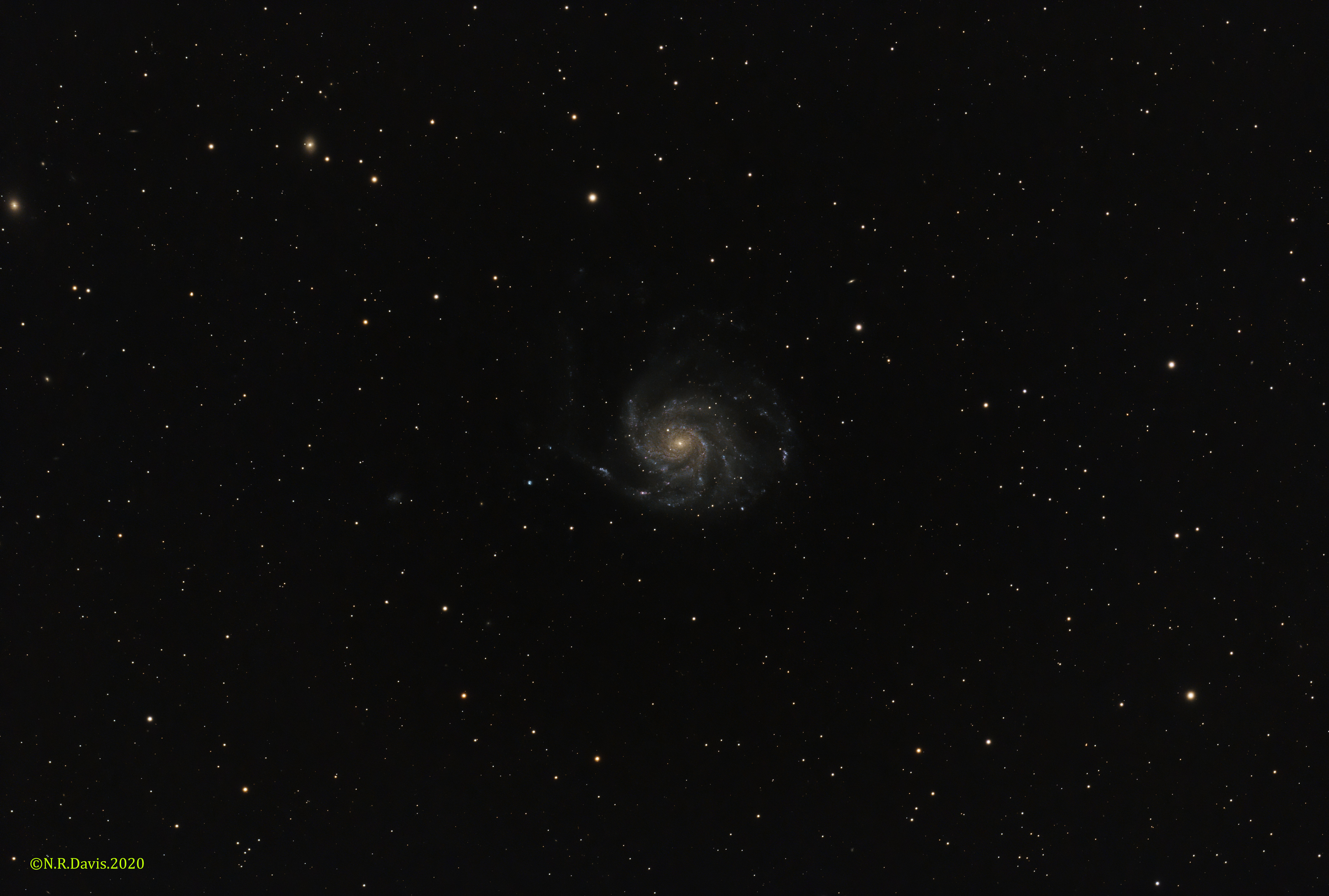No light pollution filter was used so this is straight from telescope to sensor.
Captured Frames Lights x 540, Darks x 50, Bias x100, Flats x100, Dark Flats x100
at 50mb per image they eat up disk space
Equipment
Avalon M-UNO Synscan Mount
Skywatcher ED72 Guide telescope + Altair 290MM Guide Cam + Sesto Senso focus motor
APM LZOS 130/780 + M/R 1x Flattener so F6 + ZWO EAF focus motor
ASI2600MC Pro Main Imaging Camera at 200g -10c Black level 12 20s exposures
Pegasus Ultimate Powerbox V2 to run everything.
Software SharpCap, Astro Pixel Processor, Photoshop CS2020
M101 400 x 20s integration time 8000s / 133m 20s Bortle 5 Sky 0% moon
 _2020_03_24__M101_400x_20s__133m20s_200g_12bl_-10c by Nick Davis, on Flickr
_2020_03_24__M101_400x_20s__133m20s_200g_12bl_-10c by Nick Davis, on FlickrCheers
Nick